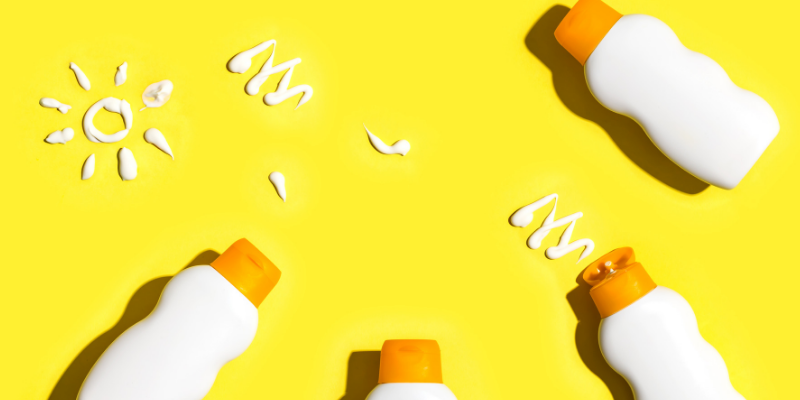Are You Using Sunscreen the Right Way?

May is National Skin Cancer Awareness Month, so what better time to talk about some of the myths and misconceptions about sunscreen use? Studies continue to show that most people are not applying sunscreen the correct way in order to provide their skin with maximum sun protection. Before you start slathering on your SPF this summer, keep these tips in mind.
1. Use the Correct SPF
SPF stands for “sun protection factor,” and SPF products range anywhere from 5 to 100. It is recommended that you use an SPF of at least 15 every day as part of your morning routine. If you are going to be outside in the sun for a long period of time, use SPF 30 or higher. Note that SPFs over 50 provide a negligible amount of added sun protection – i.e. SPF 100 does not double the sun protection of SPF 50. You still need to reapply sunscreen every hour when outside or after swimming, even if you use a high SPF. People who use high SPFs tend to have a false sense of security and are therefore actually more likely to burn and experience sun damage.
You should also choose a sunscreen that says “broad spectrum” on the label, meaning that it protects against both UVA and UVB rays.
2. Apply Enough Sunscreen
Studies continually show that most people do not apply enough sunscreen to maximize its effectiveness. In fact, if you only apply a thin layer of sunscreen, your skin is only minimally protected and is therefore still very susceptible to sun damage. In order to get the SPF listed on the bottle, you need to apply a half teaspoon to your face and one ounce (a shot glass full) to the exposed areas of your body.
This is one of the reasons why SPF in makeup isn’t effective – you would have to apply seven times the normal amount of foundation to get the SPF listed on the label and 14 times the normal amount of powder. Stick with a regular sunscreen of at least SPF 15 instead.
3. Men, Don’t Forget Your Beard
According to data from the CDC, less than 15% of American men regularly wear sunscreen. This is one of the reasons why researchers believe that melanoma is more common and often deadlier in men than in women. Guys – not only do you need to be wearing sunscreen of at least SPF 15 on a regular basis, but take care not to forget commonly missed areas, such as your chin covered by a short beard or stubble. Apply sunscreen to this area like you would anywhere else. If you have a very long, thick beard, studies have shown that your facial hair can offer sun protection.
Other commonly missed areas when applying sunscreen include the eyelids, tips of your ears, back of your neck, and scalp.
4. Don’t Mix Bug Spray and SPF
While many bug sprays contain SPF, using a combination insect repellent and sunscreen is not recommended, since the ingredients used to repel bugs can lower the effectiveness of SPF. In addition, sunscreen ingredients can increase the absorption rate of chemical ingredients used to repel insects, thus increasing their negative side effects. For these reasons, it is better to use two separate products rather than combinations in this case.
5. Check Expiration Dates
Many people do not realize that sunscreen does expire – so you can’t necessarily reach into your beach bag from last year and pull out effective sunscreen. The FDA requires that all sunscreen labels contain an expiration date, unless the formula has been clinically proven to last for three years. So if you check your bottle and don’t see an expiration date, assume that it is three years from when you bought it.
However, heat, light, and moisture can cause many skin care products to break down more quickly, including sunscreen. So as a general rule of thumb, it is best to buy new sunscreens every year, unless you are taking care to always store them in a cool, dry, and dark place. Besides, if you are applying enough sunscreen with each use, one bottle shouldn’t last you more than a season.
In Summary
Every Baumann Skin Type® should wear sunscreen on a daily basis to reduce the risk of skin cancer, sun damage, and accelerated aging. Learn more about the two different types of sunscreen here to help you find out which sunscreen is the best fit for your skin.
To see more sun care tips and how-to videos from Dr. Leslie Baumann, follow Baumann Cosmetic on Facebook, Instagram, and YouTube so you never miss a post!
Wishing you great skin!
©2019 Metabeauty, Inc.


